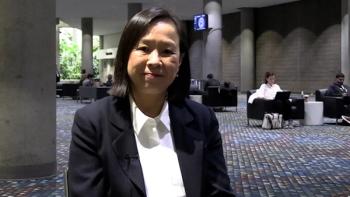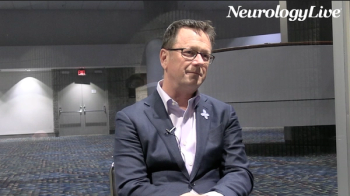
Ushering in a New Era of Training in Child Neurology Using Competency-Based Education: Kathryn Xixis, MD
At CNS 2025, the associate professor of neurology and pediatrics at the University of Virginia discussed using educational model frameworks to prepare child neurology trainees for clinical practice. [WATCH TIME: 3 minutes]
WATCH TIME: 3 minutes | Captions are auto-generated and may contain errors.
"When we do interventions like [entrustable professional activities], where we are giving feedback in the moment, not 6 months later, not at the end of the rotation, there is evidence that people do change their behaviors and improve their outcomes by getting that level of feedback."
In recent decades, medical education has increasingly shifted toward a competency-based medical education (CBME) framework, an outcomes-focused model that emphasizes formative, workplace-based assessments rather than relying solely on traditional summative evaluations.1 Moreover, entrustable professional activities (EPAs) were developed as discrete units of professional work to provide context for competencies and offer evaluators a structured method for assessing specific clinical tasks. Initially used primarily in postgraduate training, EPAs are now also being applied in undergraduate medical education.
The development of standardized EPAs and their integration into medical schools aims to clarify the competencies expected of graduates and reduce variability in trainee skills. This approach can guide curricular planning to support students in acquiring essential competencies before postgraduate training. When students do not meet certain benchmarks, additional learning opportunities may be provided to help them achieve the expected level of competence. Child neurologist Kathryn Xixis, MD, presented a session focused on developing EPAs specifically for child neurology training at the
In an interview at the meeting with
REFERENCES
1. Kuehl SE, Spicer JO. Using entrustable professional activities to better prepare students for their postgraduate medical training: a medical student's perspective. Perspect Med Educ. 2022;11(6):359-364. doi:10.1007/s40037-022-00731-x
2. Xixis K. Defining the Outcome: Developing EPAs for Child Neurology Training. Presented at: Child Neurology/NDD Educators Symposium: Teach, Mentor, and Inspire: A Symposium for the Child Neurology Educator. 2025 CNS Annual Meeting; October 8-11, 2025; Charlotte, North Carolina.
Newsletter
Keep your finger on the pulse of neurology—subscribe to NeurologyLive for expert interviews, new data, and breakthrough treatment updates.


































